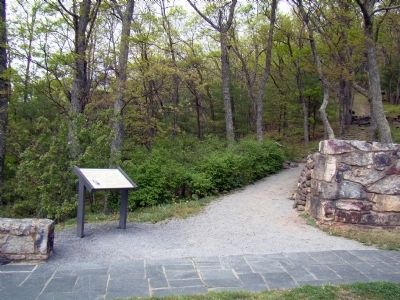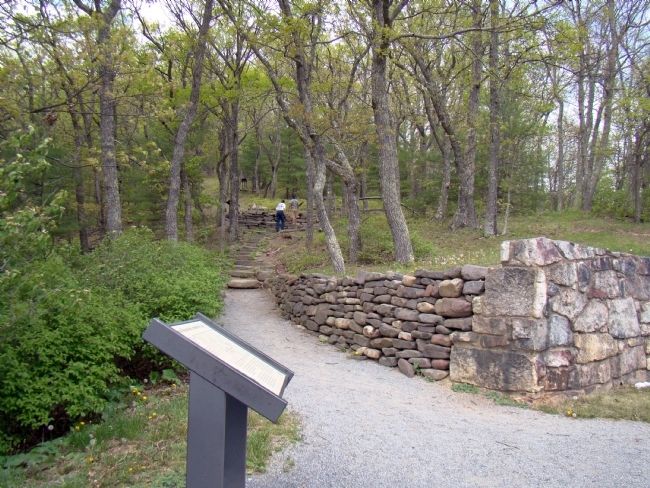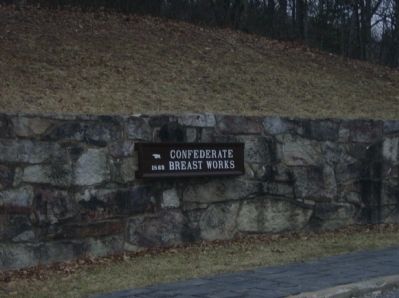Near West Augusta in Highland County, Virginia — The American South (Mid-Atlantic)
Confederate Breastworks Interpretive Trail
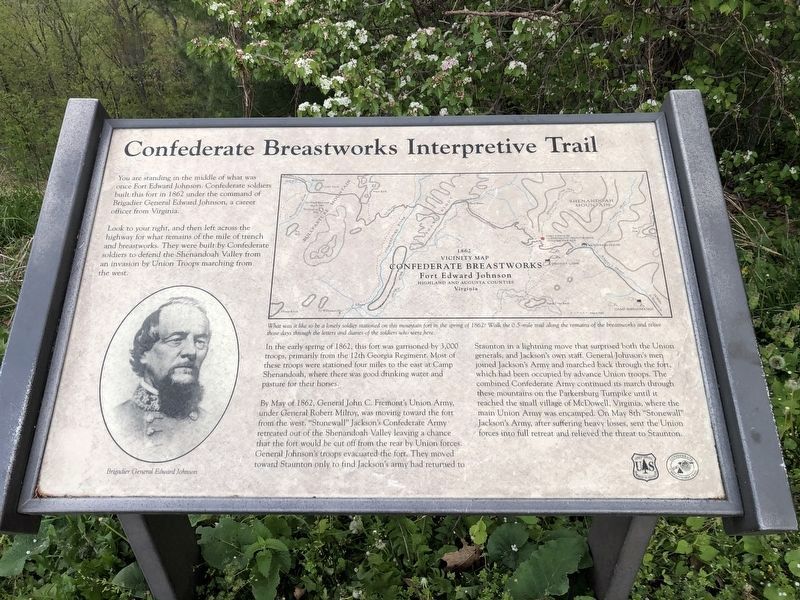
Photographed By Devry Becker Jones (CC0), May 8, 2021
1. Confederate Breastworks Interpretive Trail Marker
You are standing in the middle of what was once Fort Edward Johnson. Confederate soldiers built this fort in 1862 under the command of Brigadier general Edward Johnson, a career officer from Virginia.
Look to your right, and then left across the highway for what remains of the mile of trench and breastworks. They were built by Confederate soldiers to defend the Shenandoah Valley from an invasion by Union Troops marching from the west.
In the early spring of 1862, this fort was garrisoned by 3,000 troops, primarily from the 12th Georgia Regiment. Most of these troops were stationed four miles to the east at Camp Shenandoah, where there was good drinking water and pasture for their horses.
By May of 1862, General John C. Fremont’s Union Army, under General Robert Milroy, was moving toward the fort from the west. “Stonewall” Jackson’s Confederate Army retreated out of the Shenandoah Valley leaving a chance that the fort would be cut off from the rear by Union forces. General Johnson’s troops evacuated the fort. They moved toward Staunton only to find Jackson’s army had returned to Staunton in a lightning move that surprised both the Union generals, and Jackson’s own staff. General Johnson’s men joined Jackson’s Army and marched back through the fort, which had been occupied by advance Union troops. The combined Confederate Army continued its march through these mountains on the Parkersburg Turnpike until it reached the small village of McDowell, Virginia, where the main Union Army was encamped. On May 8th “Stonewall” Jackson’s Army, after suffering heavy losses, sent the Union forces into full retreat and relieved the threat to Staunton.
Erected by U.S. Forest Service.
Topics. This historical marker is listed in these topic lists: Forts and Castles • War, US Civil. A significant historical month for this entry is May 1862.
Location. 38° 18.693′ N, 79° 23.058′ W. Marker is near West Augusta, Virginia, in Highland County. Marker can be reached from Route 250, on the right when traveling west. Part of the “Confederate Breastworks Trail” at Fort Edward Johnson. Touch for map. Marker is in this post office area: West Augusta VA 24485, United States of America. Touch for directions.
Other nearby markers. At least 8 other markers are within walking distance of this marker. “The Shenandoah Mountain Pass is grand indeed…” (a few steps from this marker); Welcome to Fort Johnson (a few steps from this marker); Highland County / Augusta County (a few steps from this marker); Fort Edward Johnson (within shouting distance of this marker); a different marker also named Fort Edward Johnson (within shouting distance of this marker); “It was cold business…”
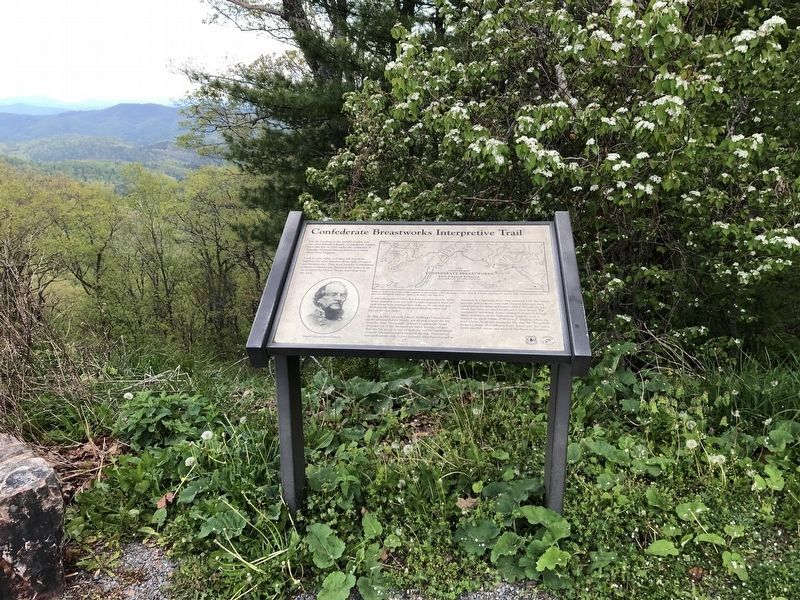
Photographed By Devry Becker Jones (CC0), May 8, 2021
2. Confederate Breastworks Interpretive Trail Marker
More about this marker. On the lower left is a portrait of Brigadier general Edward Johnson. In the upper center is a map depicting the works and nearby locations as it existed in 1862. It is captioned, What was it like to be a lonely soldier stationed on this mountain fort in the spring of 1862? Walk the 0.5 mile trail along the remains of the breastworks and relive those days through the letters and diaries of the soldiers who were here.
Related markers. Click here for a list of markers that are related to this marker. To better understand the relationship, study each marker in the order shown.
Credits. This page was last revised on October 30, 2022. It was originally submitted on March 6, 2009, by Robert H. Moore, II of Winchester, Virginia. This page has been viewed 7,804 times since then and 50 times this year. Last updated on October 29, 2022, by Carl Gordon Moore Jr. of North East, Maryland. Photos: 1, 2. submitted on May 8, 2021, by Devry Becker Jones of Washington, District of Columbia. 3, 4. submitted on May 5, 2010, by J. J. Prats of Powell, Ohio. 5. submitted on March 6, 2009, by Robert H. Moore, II of Winchester, Virginia. • Bernard Fisher was the editor who published this page.
